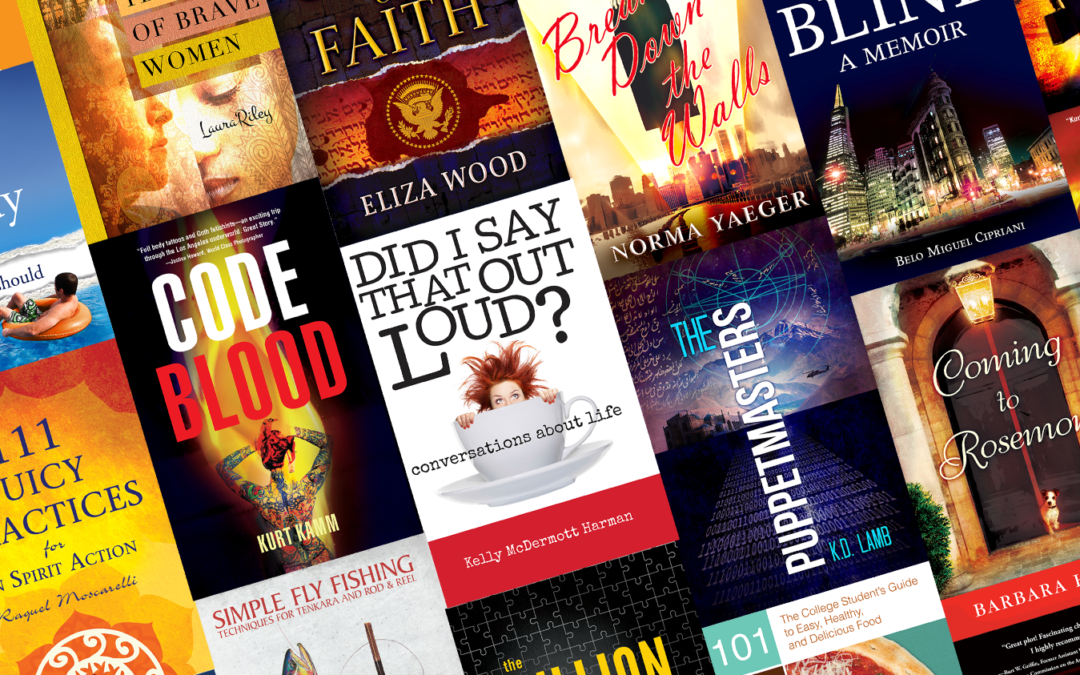Have you ever picked up a book because you were drawn in immediately to its cover? But what about the opposite reaction? Have you ever seen a book cover and known at first glance that you didn’t want to read it? Well, you probably didn’t think about why you had those reactions. It was likely just a feeling. Maybe it didn’t look professional? Maybe the cover art didn’t match the genre? Or the font—was the font kind of horrible? All of these book cover elements send a message to our brains that the book will be good or bad, simply based on a quick glance. Do we even have to repeat the old adage? We all know books are literally judged by their covers.
And that’s why, as an author, you want to have the best book cover possible. There’s a lot of design work, planning, and subtlety that go into making a great book cover and we’ve listed the six most important below.
The Surface Finish and Weight of Your Book Cover
Should your book cover be glossy, or matte? Will it be lightweight paperback or a hefty hardcover? What size will it be? So many things to consider… And many of these things concern your budget as well, of course. But that’s for you to decide when you talk with your designer. All of these things make a difference. A matte cover says something different than a glossy cover. This also matters when it comes to how it will look with the rest of your design elements.
The Aforementioned Book Cover Font
We’ll start off by telling you what you may already know. Fonts are controversial! There’s even been documentaries made about fonts. Fonts get bad reputations and are the object of ridicule. But to be fair, who could take Comic Sans seriously? Bad puns aside, your font is a huge part of the the overall message and feel of your book cover. There are even certain fonts that are conventional to certain genres. So choose wisely.
The Layout and Design
As with websites, the layout and design are crucial book cover elements. Even the smallest oddities really stand out. And standing out in a good way is awesome. But if your potential readers can’t see the message clearly, the title is in an unconventional format or obscured by the image, then it won’t stand out in the right way. You need to consider things such as where to put your name—should it be above or below the title? You’ll have to decide if you want the text or the cover art to stand out more. Where do you want to place all the good stuff?
The Cover Art
There are so many options for cover art. You can go with photos for a sense of realism. You can do a more hand-crafted look, or go for full minimalism with just a blank color block. But your cover art should reflect your themes and your genre while also being visually appealing. That’s a tall order, we know. But designers are amazing like that. They take the essence your book and turn it into a visual summary. Book covers are a thing of beauty. They’re an art form. And so are books. They should be treated with the respect they deserve.
The Book Cover Conventions
In the early days of self-publishing, there was always a tell that a book was self-published. That tell was usually that the cover didn’t fit conventions. The size may be odd. The ISBN number didn’t exist or was in the wrong place. The author photo was also in a weird spot and the bio was too long. Now, it’s a lot harder to tell because the publishing world has changed so much and Indie authors actually get respect. And that’s mostly because they work with people on their publishing journey that know what they’re doing with all your book cover elements.
And Last But Not Least, The Book Cover Copy
This means the text on your cover, like your book summary, author bio, and if and where you put your book blurbs. Book cover space is very limited so you have to be smart about what to put in and what to leave out. We all know you want to say as much as possible to sing the praises of your book, and to enchant your potential readers, but the wrong type of text and too much of it can be overwhelming and even off-putting to someone picking up your book for the first time. Make it short and sweet. This also makes it easier for the designer to do their job, so they aren’t fighting for space with too many words.


Recent Comments